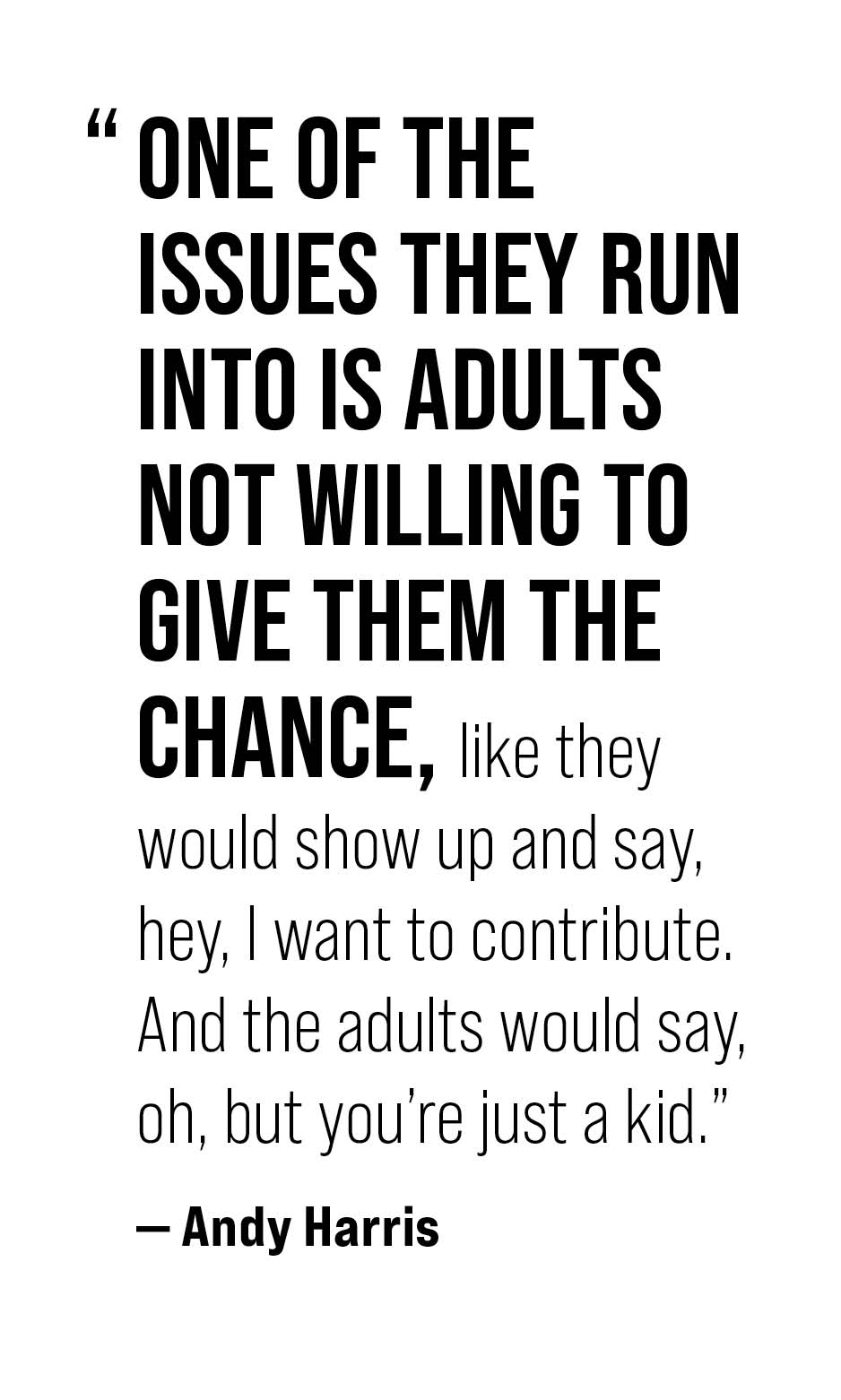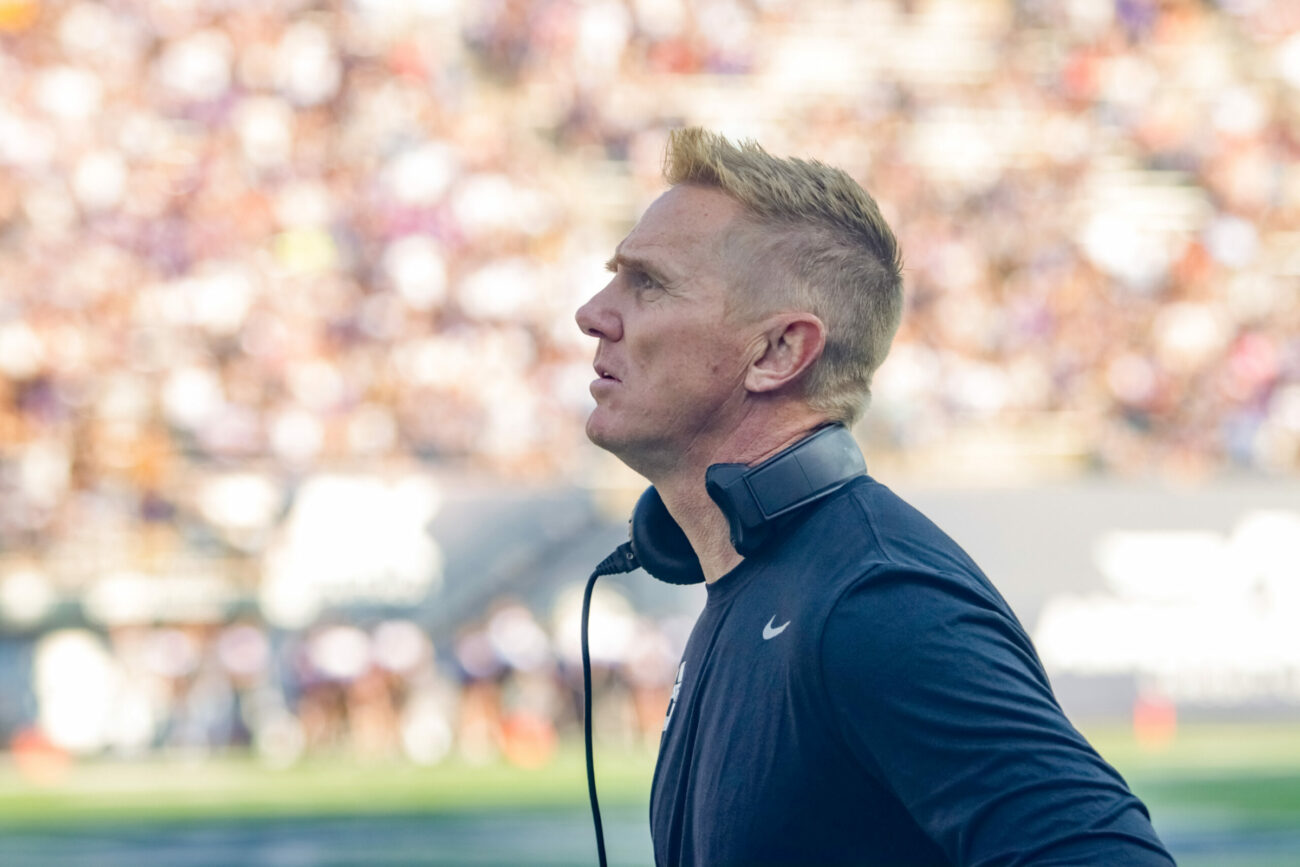The Science Behind Service: Exploring the Psychology of Selfless Acts

USU assistant professor Andy Harris hopes to shed light on key factors that contribute to our sense of social responsibility
By Logan Jones ‘18
What drives a high school student, immersed in the tumultuous and often overwhelming world of adolescence, to spend their weekends volunteering at a food bank?
Why are some teens — any of them, really — willing to donate their increasingly limited free time to volunteering in animal shelters, or organizing community events, or spending time with seniors in nursing homes? What motivates any youth to establish such altruistic ideals at such a young age?
These are the questions fueling Andy Harris, an assistant professor and researcher in Utah State University’s Department of Human Development and Family Studies.
For Harris, whose work as an adolescent development specialist aims to decode the motivations of teenagers who choose service to community over more conventional youthful pursuits, the complex psychological forces guiding these selfless acts are more than a mere puzzle — they’re a question rooted in personal history.
“When I was in high school, I became involved with a youth leadership organization designed to turn high school students into leaders called Hugh O’Brian Youth (HOBY),” Harris said. “I’ve stayed involved with that program over the past 15 years now, and one of its major components is community service and involvement.”
HOBY served as Harris’ entry point to a broader investigation into the psychology of selfless acts, particularly during adolescence. The science of service, it turns out, isn’t just some fickle gene hiding somewhere deep in our genetic makeup.
Research into service-oriented psychology invokes research and study from several related fields and requires a thorough dive into humanity’s cognitive development, a foundational understanding of personal passions, and the effects of social influences on the still-developing teenage mind.
Though daunting in scope, Harris’ research provides a glimpse into the cognitive changes during adolescence that influence the decision-making process, as well as key factors contributing to our collective sense of social responsibility.

Egocentrism and Metacognition: Building Blocks of a Service Mindset
“Those teenagers that engage in community service — what is it about them?” Harris asks. “Why spend time doing that instead of other, more self-centered teenage behaviors? That’s where my research has been.”
These inquiries first led Harris to the concept of metacognition in the developing mind. Teenagers often discover a trademark internal focus in the early stages of puberty, due to heightened metacognition and the development of a so-called “theory of mind.”
Metacognition, or the ability to think about one’s own thoughts, is necessary for us humans to consider the thoughts of others — in fact, it’s an essential component of our development into society-based creatures. Unfortunately, it’s also the root of youthful egocentrism.
“Some interesting cognitive changes happen during adolescence,” Harris explains. “One of the reasons they can appear self-absorbed is because they are constantly thinking about what other people are thinking about. It creates what we call egocentrism, where they’re convinced everyone is thinking about them as much as they’re thinking about themselves — which is not true, as the other teenagers are also thinking about themselves. It creates an ‘imaginary audience,’ as we call it.”
Learning to Recognize Ideals, Agency, and Impact
“The other cool thing that happens for teenagers is, due to growth in the prefrontal cortex, they’re able to think about the future in a way that is different from how a child thinks about the future,” Harris says. “If you ask a child what they want to be when they grow up, they have very little ability to think about what that actually means. But for a teenager, they can think — what is that going to look like? What things do I have to start doing now so that I can reach that goal in the future?”
This is where the mental table-setting for altruistic actions finally takes shape. As Harris explains, once a person can think in terms of the future, they can also trace their thoughts and actions toward their potential impact on future events. Knowingly affecting future outcomes for oneself and others introduces a new, critical ingredient to the selflessness mix — ideals.
A strong sense of idealism is something of a hallmark for teenagers, who can quickly learn to wield their newfound cognitive ability to connect actions to real-world changes but without the advantage of prior experience — or the burden — depending on your perspective.
“Think about climate change, for example,” Harris says. “Teens can really fully grasp the idea that the future could be unlivable, and they can become really concerned or passionate about trying to make a change. But, not only do they have that ability to now see into the future — they also don’t have a lot of the negative experiences that we as adults do, which can leave us feeling jaded about the possibility of getting involved in an issue like this.”
For a group too often made to feel their lack of experience is strictly a liability, the research suggests the same lack of experience is among the key factors allowing service-driven attitudes among teenagers to flourish.

Peak Engagement: Social Responsibility and Imagination
According to Harris, the peak time for engagement and activism is likely during late middle school, around ages 13 to 14. However, it’s clear to researchers that to instill a lasting sense of social responsibility, elements of both nature and nurture are required.
“When parents are involved in the community, kids are better able to learn that’s just a way of being, and so they’re much more likely to engage,” Harris says. “Just by having them modeled by adults around them, you have this natural process of your brain developing to the point where you realize what I do makes a difference. Thus, one of the biggest predictors of teenagers being involved in their community is whether or not their parents are involved in the community.”
Passion as a Catalyst for Action
Passion emerges as a recurring theme in Harris’s insights, as well as in those of his academic forebears, who have contributed to the foundational principles upon which his research is based.
Previous studies on youth program involvement (Harris cites duos Nickki Pearce & Reed Larson and Sarah Schwartz & Karen Suyemoto as critical building blocks) suggest a strong link between teens forming a personal connection to a program’s mission and becoming intrinsically motivated by work on program activities.
Another key study (this one from Pancer, Pratt, Hunsberger & Alisat) investigated which determining factors most strongly dictated the degree of activity among teenagers. The findings indicate that more frequent discussions with parents and peers consistently produce more advanced identity development and community involvement.

“One of the things that I’ve seen in my own research is teens being really involved in causes that they’re passionate about,” Harris says. “I interviewed teenagers that were among what we termed the hyper-involved group, and one of the commonalities in all of them is that they were very passionate about the thing they were involved in.
“There was one young man whose dad suffered from Parkinson’s, and so he became very involved in setting up and organizing community events and fundraisers to try and find a cure for that disease. There was another young man whose little sister was almost taken and trafficked, so he became very involved in battling sexual assault and trying to help victims of sexual violence.”
Though some teens might first encounter community service as a requirement for graduation, interacting with local issues firsthand and seeing the impact of their actions often catalyzes a more genuine transformation.
“It’s not uncommon for high schools to have community service requirements as part of graduation,” Harris says. “And it turns out that there’s some research to show that for some teens, they become passionate about an issue because they’re actually interacting with the problem — they become passionate about it, just through interactions.”
Positive Youth Development: Shifting Perspectives
While a single cognitive chain reaction isn’t the only contributor to proactive community service and involvement (school-based opportunities, parental involvement, individual personality traits, and brain development during adolescence all play equally pivotal roles), Harris’ work suggests the underlying importance of these factors may be underestimated in the eyes of many.
His studies also support the growing philosophy of positive youth development, a perspective that envisions young people as valuable assets to the community rather than mere individuals to navigate through adolescence.
“One of the issues they run into is adults not willing to give them the chance. Like, they would show up and say, ‘Hey, I want to contribute.’ And the adults would say, ‘Oh, but you’re just a kid,’” he said.
Harris’ work is not just a scientific exploration — it’s a call for a shift in perspective. By embracing the philosophy of positive youth development, he encourages society to view teenagers not merely as individuals navigating through adolescence, but as valuable assets capable of making substantial contributions.





